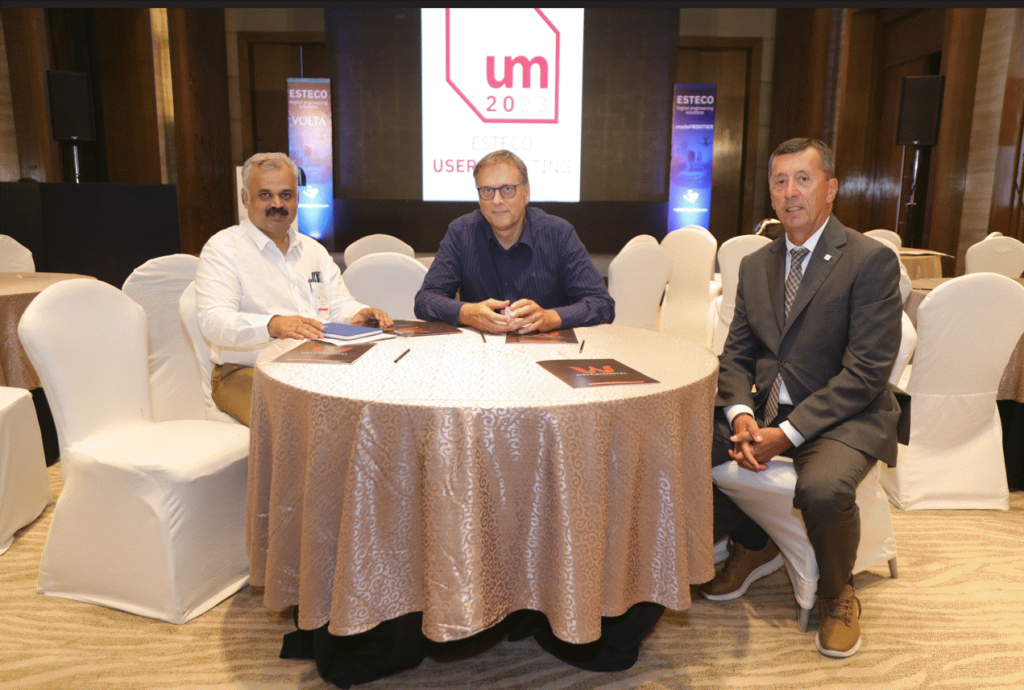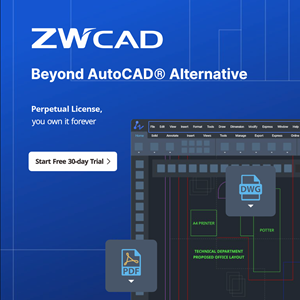Over a hundred engineering enthusiasts attended ESTECO Users’ Meeting India in Bangalore to gain insights on how leading OEMs such as Cummins, Aeronautical Development Agency (ADA), Centre for Airborne Systems (CABS), Forvia Faurecia, Mahindra & Mahindra, and Tata Motors have implemented ESTECO’s software solutions to improve design performance, speed up engineering design processes and achieve their business goals in the age of digital transformation.
During the event, we had the opportunity to meet Enrico Nobile, Scientific Advisor of ESTECO, and Luka Onesti, Chief Technology Officer (CTO) of the company. We discussed with them how digital transformation trends influence the evolution of ESTECO Digital Engineering Software solutions and how the company’s presence and network in the Indian market are relevant to its global business strategy.
India has emerged as the next manufacturing hub in Asia for automotive companies. Also, the country’s economy is steadily growing in many other industries and counts on a vast talent pool in the tech and engineering fields. The ESTECO 2023 Regional Users’ Meeting gives a picture of this thriving environment. Enrico Nobile, how important is your presence in the Indian market to ESTECO’s global strategy?
The Indian market has proven to be incredibly fertile, providing a great environment for us to establish and deepen our roots. Over the past decade, our collaboration with our Indian office has evolved into a robust and symbiotic relationship. This cooperation integrates seamlessly with our development processes and ensures the maintenance of high standards in customer support for our local, growing customer base, not only in the Automotive but also in the Aerospace and Defense sector. Furthermore, we, at ESTECO, have always considered R&D and the relationship with Academia of strategic importance, since one of our objectives is to provide researchers and future engineers with our best-in-class technology, in order to empower their research capabilities and to enhance their future career. This is achieved, e.g., via our Academy program, which provides students, researchers and professors with convenient licenses and training, and our Design Competitions, which represents an excellent opportunity for engineering students worldwide to apply their knowledge and test optimization skills on real-world problems using ESTECO technology integrated with leading simulation tools. India, being recognized as a country with a highly talented, large community of researchers and engineers, represents an exceptional market where ESTECO technologies can be not only deployed but also co-developed, tested and improved. Our rapidly growing office in Pune testifies our commitment to increase our presence and activities in India.
The event in Bangalore was also a perfect opportunity to discover the recent advancements of ESTECO software solutions. Specifically, the introduction of Business Process Management (BPM) is one of the new key features in VOLTA, so that the ESTECO process automation technology is no longer limited to the engineering process workflow. Now users can combine the management of human tasks with simulation workflow automation. Luka Onesti, could you explain why BPM technology makes an impact in the context of an SPDM framework as the ESTECO VOLTA enterprise platform?
More than 20 years ago, ESTECO started to tackle multi-objective optimization by providing seamless integration with any CAD/CAE application into modeFRONTIER’s automated workflow. Then this has evolved with the introduction of Business Process Management (BPM) capabilities, which allowed for incorporating the management of human tasks along with simulation workflow automation. Thanks to BPM in VOLTA, companies move from a task-oriented to a process-driven approach. They can map engineering design processes with Business Process Modeling and Notation (BPMN 2.0) workflow editor, and then execute and monitor human and simulation service tasks. By adopting industrial standards like Business Process Modeling and Notation (BPMN), Decision Model and Notation (DMN), and Business Process Simulation (BPSim), we are now fully embracing the low-code or even no-code workflow automation paradigm. This is where the integration of modern AI and ML techniques will help to map and automate the drawing of company-wide operational process workflows. These will be then automatically simulated, validated and optimized with event-driven or agent-based solver architectures. In the end, the final objective is to achieve a proper Robotic Process Automation (RPA) of business workflows that will bring together repetitive algorithmic tasks with human-in-the-loop decisions.
You were talking about AI and ML techniques. How do these technologies have an impact on simulation-driven product development?
AI and ML can be the solution to reduce the simulation turnaround time, minimize prototypes, make smarter use of computing resources, and speed up the whole design process. At ESTECO, we continue to invest in this direction with our extensive library of design exploration and optimization algorithms, ML-based Response Surface Models (RSMs), and decision-making algorithms which are embedded in our VOLTA and modeFRONTIER software solutions. However, identifying the right strategy for your design problem can take a certain level of knowledge and expertise. This is why, along with the traditional manual approach which requires setting all parameters to build your own optimization strategy, you can run our algorithms in the autonomous one-click mode. This is a smart solution, which allows users to balance the time it takes to find the optimal solution with the number of design iterations. Plus, it is suitable for expert and non-expert users, depending on your time or expertise at hand.
Another key aspect to be considered in simulation is the need for high availability of computing resources to reduce the design cycle time. As a result, many companies are currently investing into private cloud infrastructures or using public cloud systems to centralize the management of their applications and consequently reduce costs and simulation lead time. Are the ESTECO software solutions available in the cloud?
Many companies are currently investing into private cloud infrastructure or using public cloud systems to centralize the management of their applications and consequently reduce costs. We started some years ago with our first Software as a Service (SaaS) product Cardanit, a modern web and mobile platform for Business Process Management. Lately, even our VOLTA enterprise platform has adopted a new microservice architecture ready to be deployed standalone in a private data warehouse infrastructure or shared in a public cloud environment. While a traditional monolithic architecture guarantees good performance, it isn’t usually well-suitable for a large number of geographically distributed concurrent users. The cloud-native installation of VOLTA enables organizations to handle the growing demand of computational resources without impacting performance or availability. This is just the beginning of our journey to bring the complete ESTECO product portfolio on any private or public cloud (such as Google Cloud, Amazon Web Service, Microsoft Azure). Our applications are becoming more and more scalable, elastic, easy to install and completely transparent to customers.
The adoption of Simulation Process and Data Management (SPDM) technology offers several key advantages in terms of version and revision control of simulation models, collaboration across various teams and democratization of simulation results for effective decision-making. How does VOLTA and its SPDM capabilities help your customers to take full control of the engineering design process?
At Cummins, process automation is a crucial part of simulation-based product development as it facilitates data-driven and closed-loop decision-making. They currently focus on integrating VOLTA web-based multidisciplinary design optimization (MDO) framework into their simulation culture as a key accelerator to democratize simulation models and data. By using MDO instead of the traditional manual process they achieved one month lead time reduction and improved fuel economy by 2.5%. As part of its commitment to digital transformation, Raytheon has an integrated digital engineering methodology built on the deliberate use of authoritative sources of data and models to optimize business outcomes from concept through disposal. They have therefore selected VOLTA as their trusted server-based collaborative framework to integrate MDO into their digital engineering ecosystem.

We extend our gratitude to Enrico Nobile, Scientific Advisor of ESTECO, and Luka Onesti, Chief Technology Officer (CTO) for their insightful discussion. If you have any questions for them or for DailyCADCAM, please feel free to leave a comment below or contact us via email at sachin@dailycadcam.com. We are more than happy to provide answers and further information.
Thank you,





